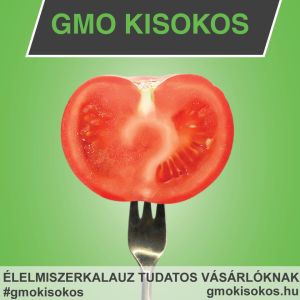The victory came so fast Greenpeace Greece didn’t have a press release ready.
On Sept. 17, Greece’s largest dairy producer committed to stop using genetically modified organisms (GMOs) in its cattle feed by 2013, replacing GMOs with natural protein plants grown by Greek farmers.
The public commitment is the result of a more than eight-month campaign by Greenpeace Greece to raise awareness of GMO in dairy and offer solutions that are good for people, economy and the planet, according to media officer and digital mobilisation team member Lena Karvounaki (follow Lena on Twitter).
“It was awesome,” says Lena on the win, kudoing the integrated team approach for making it happen.
She adds the campaign success is significant because the issue of GMOs in feed is complex and not easily relatable to people’s everyday lives.
Wanting to share how Greenpeace Greece got livestock feed on the public’s agenda, Mob Lab caught up with Lena to share key factors resulting in the campaign success.
1) Share Solutions through Storytelling
Greenpeace Greece knew building public engagement on the issue of imported GMO soy was instrumental to getting companies to make the shift to local producers. They exposed the problem by highlighting that Greece’s four largest dairy producers were importing expensive soy protein at a time when the national economy and farmers were suffering. This was followed by a solution shared through time-lapse photography demonstrating how local farms could be producing plant proteins.
“We wanted to position Greenpeace as solutions focused,” says Lena. She adds the campaign also resonated by tapping into Greece’s current economic crisis.
Calling the campaign the Bean and the Chickpea, a reference to Greek fairy tales, the campaign received a number of media mentions.
2) Follow Engagement with Action
Days after exposing the problem and offering a solution, Greenpeace Greece launched an action page asking people to sign a petition demanding the Greek dairy companies’ products come from animals fed with local feed.
To get people on the page, they reached out to their base of supporters using split e-mails and testing different titles in order to increase open rates. It was a new approach for Greenpeace Greece resulting in increased forwards, which was usually low, if any at all.
In order to expand their audience and attract new sign-ups, Greenpeace Greece began promoting the action page in all of its communication, making it the main point of reference for everything the office did.
“We promoted it in news portals and blogs by sending out constant updates and different photos always including the call-to-action with the url,” says Lena “We ran a Facebook ad for two weeks and we tested different Facebook posts, teasers and photos. The action page actually had 7,384 unique page views coming from Facebook.
“Lastly, we had volunteers gathering pledges in different events we were participating in, and the direct dialogue team in the streets.”
The concentrated, multifaceted approach worked. Greenpeace Greece collected 10,000 signatures in one week. They bumped their petition target up to 20,000 and netted 17,000 signatures in two weeks.
3) Online/Offline Mobilisation
With a large number of supporters behind them, Greenpeace Greece sent a final split e-mail to its subscribers. To people who hadn’t yet signed the petition, the e-mail urged for their signatures. To people who had already signed the petition, Greenpeace Greece asked people interested in further supporting the campaign to provide their phone number.
For both e-mails, the team used photos and headlines that received high response rates and shares when used on Facebook.
They not only hit their 20,000 target, they received 500 phone numbers.
This enabled the Greenpeace team to move into their final action, a combination of online/offline mobilisation. Greenpeace Greece followed up with the people who gave their numbers, asking them to call the largest Greek dairy company on a planned day of action, and ask them to commit to using local feed.
Simultaneously, Greenpeace staff launched a day of action outside the company with Greenpeace’s executive director (ED) sending a letter to the company’s CEO. The ED and several activists also hung from ropes to garner more attention.
In addition, Greenpeace Greece released a mobilisation video of their activity and a toolkit to their Facebook fans, encouraging them to also take action.
After 10 hours and a barrage of calls, the company made a public commitment to replace the soy with Greek animal plants by the end of 2013. They also set up a meeting with Greenpeace Greece to present their strategic plan for phasing out soy.

Activists and Greenpeace staff outside of the dairy company’s headquarters.
“We didn’t expect that,” says Lena, on the fast response.
“This was an ideal case of integration. We had a core team that was committed to this work and we (experimented), in order to capitalize in the most flexible, timely, and appropriate way.”
The GMO win is part of larger Greenpeace Greece campaign to offer ecological solutions to the food and financial crisis. This campaign already has 50,000 signatures in support of sustainable Greek agriculture.
Stay connected: @greenpeace_gr @lena_karv
Do you have an innovation in mobilisation and people-powered campaigns? Share it with Mob Lab by contacting moblab@greenpeace.org.




